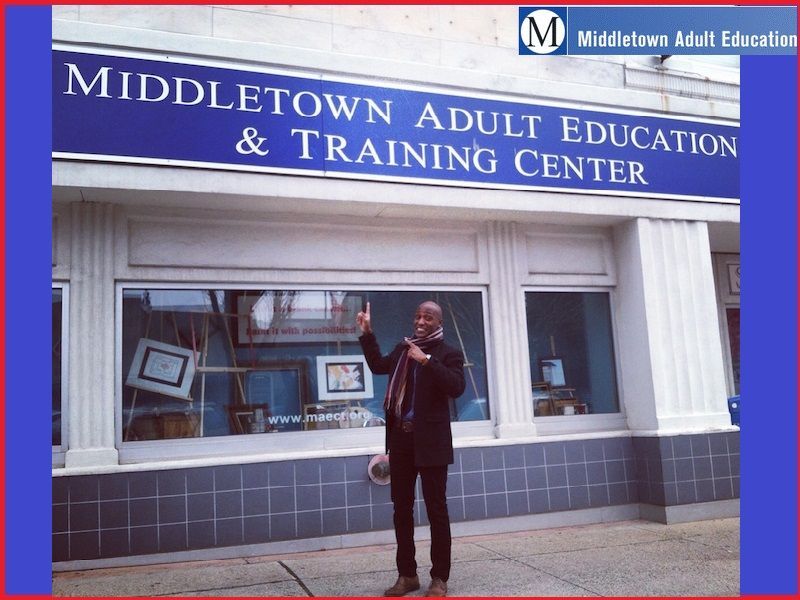What is Secondary Education?
Secondary education is the stage of schooling following primary education. Secondary education typically takes place in secondary schools, often referred to as high schools in the United States. In some countries, upper secondary education also includes vocational or technical training.
The purpose of secondary education is to prepare students for further education and the workforce. In most countries, secondary education lasts for four years, although some countries have three-year or five-year programs.
In the United States, students typically begin secondary education in the ninth grade and complete it in the twelfth grade. During secondary education, students take courses in English, mathematics, science, social studies, and electives. Many high schools also offer foreign language courses, although these are not typically required for graduation.
The curriculum in secondary education is designed to challenge students and prepare them for their future education and careers. In addition to academic coursework, secondary education also typically includes extracurricular activities, such as sports and clubs. These activities allow students to explore their interests and develop new skills.
Secondary education is an important time in a young person’s life. It is a time to develop academically, socially, and emotionally. With a solid foundation in secondary education, students will be prepared to succeed in their future endeavors.
Exploring Career Opportunities in Secondary Education
For most people, the thought of choosing a career can be a daunting task. There are so many different options out there, and it can be hard to decide which one is the right fit for you. If you’re interested in working in secondary education, there are a few things you should keep in mind as you explore your options.
The first thing to consider is what type of students you want to work with. Do you want to teach at a middle school, high school, or both? Each level has its own set of challenges and rewards, so it’s important to think about what you’re looking for in a teaching position.
Next, you’ll need to decide what subjects you’re interested in teaching. Many secondary educators are generalists, teaching a little bit of everything. However, there are also opportunities to specialize in teaching a particular subject, like English or history. If you have a specific interest, it’s worth considering how you can turn that into a teaching career.
Finally, you’ll need to think about the type of school you want to work in. There are public schools, private schools, and charter schools, each with its benefits and drawbacks. Consider what type of environment you want to work in and what kind of students you want to teach before making a decision.
If you’re interested in exploring career opportunities in secondary education, take some time to research your options and figure out what type of position would be the best fit for you. With so many different choices out there, you’re sure to find the perfect job for your skills and interests.
How to Earn a Degree in Secondary Education?
There are many reasons why people choose to go back to school and earn their degree in secondary education. For some, it may be a lifelong dream to become a teacher. Others may want to make a difference in the lives of young people, or they may simply want to further their education. Whatever the reason, there are a few things that you need to know to earn your degree in secondary education.
The First Thing to do
First and foremost, you will need to have a high school diploma or equivalent. secondary education. While you may be able to get by with a GED, most schools will require you to have a high school diploma to enroll in their program. In addition, you will need to have taken and passed some basic college prep courses, such as English and Math. These courses will give you a good foundation on which to build your education degree.
Next, you will need to decide what type of degree you wish to pursue. There are two main types of degrees in secondary education: the Bachelor of Arts in Education and the Bachelor of Science in Education. Both of these degrees will prepare you to become a teacher, but they differ slightly in their focus. The Bachelor of Arts in Education degree focuses more on the liberal arts and humanities, while the Bachelor of Science in Education focuses more on the sciences. You will need to decide which type of degree is right for you based on your interests and career goals.
Once you have decided on the type of degree you wish to pursue, you will need to choose a school that offers the program. Many schools offer secondary education degrees, so you should have no problem finding one that meets your needs. Be sure to research each school thoroughly before making your decision, as you want to be sure that you are choosing a reputable and accredited institution.
The Next Step
Once you have chosen a school, you will need to complete the necessary coursework. This will vary depending on the type of degree you are pursuing, but most programs will require you to take classes in subjects such as English, Math, Science, and History. In addition, you will likely be required to take classes in pedagogy or the study of teaching methods. The coursework for a degree in secondary education can be demanding, but it is also very rewarding.
After you have completed your coursework, you will need to student-teach to earn your degree. This is an important step, as it will give you the chance to put your knowledge and skills to the test in a real-world setting. Most schools require that your student teaches for at least one semester, but some may require two or more. Be sure to check with your school regarding their specific requirements.
Once you have completed your student teaching, you will be ready to earn your degree in secondary education. Congratulations! This is a significant accomplishment that will open up many doors for you in your career.
The Benefits of Online Secondary Education
There are many benefits to getting a secondary education online. Here are just a few of the advantages that online education offers:
1. Increased Access to Education:
One of the biggest benefits of online education is that it increases access to education. With online courses, you can attend school from anywhere in the world, as long as you have an internet connection. This means that people who wouldn’t be able to go to traditional brick-and-mortar schools can get a secondary education online.
2. More Flexible Schedule:
Another big advantage of getting an online education is that the schedule is more flexible. With online courses, you can usually set your schedule and work at your own pace. This is a great option for people who have busy schedules or who need to work around other commitments.
3. Improved Interaction:
Online education also offers improved interaction between students and teachers. In a traditional classroom setting, there can be a lot of distractions and it can be difficult to get one-on-one time with your teacher. However, with online courses, you can usually email or message your teachers with any questions you have. This allows for more personal interaction and allows you to get the help you need more easily.
4. Cost-Effective:
Getting a secondary education online is also cost-effective. Online courses are often cheaper than traditional courses, and you won’t have to worry about things like transportation or housing costs. In addition, many online courses offer financial aid options to help make education more affordable.
5. Self-Paced Learning:
One of the great things about online education is that it allows you to learn at your own pace. If you’re a fast learner, you can move through the material quickly. However, if you need more time to understand the concepts, you can take your time and go at your own pace. This type of learning can be very beneficial for people who learn best at their own pace.
These are just a few of the many benefits that online secondary education offers. If you’re thinking about getting a secondary education, consider getting it online. You’ll be glad you did!
The Best Resources for Secondary Education Students
There are a lot of great resources out there for secondary education students. Here are a few of our favorites:
The Khan Academy is a great resource for math and science students. They have a ton of videos and practice problems to help you master the material.
For English and History students, the website Sparknotes is a great way to get quick and easy explanations of complex topics. They also have a lot of practice quizzes to help you study for exams.
For students who need a little extra help, there are many great tutoring services available. Some of our favorites include Sylvan Learning and Kaplan.
There are also lots of great resources for college and career planning. Our favorites include the websites CollegeXpress and CareerBuilder.
No matter what your academic goals are, there are plenty of great resources out there to help you achieve them!
What is a secondary school diploma in Canada?
A secondary school diploma in Canada is an academic credential earned after completing high school. The diploma is granted by the province in which the student attends school. To receive a secondary school diploma, students must complete a minimum number of required courses in English, mathematics, science, social studies, and physical education.
To receive a secondary school diploma, students must complete a minimum number of required courses in English, mathematics, science, social studies, and physical education. In addition, students must also earn a certain number of optional credits. The number of required and optional credits varies by province.
To graduate, students must also complete any provincial examinations that are required. These examinations test students’ knowledge in the core subject areas.
The secondary school diploma is an important credential for many reasons. First, it is often a requirement for entry into post-secondary education programs. Second, it can lead to better employment opportunities. Finally, it can help individuals to build a foundation for lifelong learning.
Receiving a secondary school diploma is an important milestone in a student’s life. It marks the end of one phase of their education and the beginning of another. For many students, it is a time of transition and change.
What age is a secondary school in Canada?
In Canada, the age range for secondary school is typically 12-18 years old. However, this can vary slightly depending on the province or territory. For example, in Alberta, the age range is 11-18 years old, while in Nova Scotia it is 12-19 years old.
The age range for a secondary school in Canada is generally determined by the age at which a student completes Grade 6. In most cases, this is 12 years old. However, in some provinces and territories, the age range for secondary school may be slightly different.
In Alberta, for example, the age range for secondary school is 11-18 years old. This means that students in Alberta typically start secondary school when they are 11 years old and finish when they are 18 years old. Similarly, in Nova Scotia, the age range for secondary school is 12-19 years old. This means that students in Nova Scotia typically start secondary school when they are 12 years old and finish when they are 19 years old.
The age range for secondary school can vary slightly from province to province or territory to territory. However, in most cases, the age range for a secondary school in Canada is 12-18 years old.
How many levels of school are there in Canada?
There are four levels of school in Canada:
1. Primary school
2. Secondary school
3. Tertiary school
4. Quaternary school
Primary school is typically for students aged 4-12. In some provinces, students start primary school as young as 3. Secondary school is for students aged 13-18. Tertiary school is for students aged 19-22. Quaternary school is for students aged 23 and up.
In Canada, students typically spend 13 years in school: 4 years in primary school, 5 years in secondary school, and 4 years in tertiary school. However, some students choose to spend an extra year or two in secondary school, and some students choose to take a gap year (or more) between secondary and tertiary school.
The Canadian education system is world-renowned, and many students from around the world come to study in Canada. Whether you’re looking for a world-class education or just want to experience a new culture, Canada has something to offer everyone.
What is Ontario Secondary School Diploma called?
The Ontario Secondary School Diploma (OSSD) is the diploma granted to a student who has completed the secondary school program of studies in the Canadian province of Ontario. It is issued by the Ontario Ministry of Education.
The OSSD is a diploma recognized by all Ontario colleges and universities, and by many colleges and universities across Canada and around the world. It is also recognized by employers as the minimum credential for many jobs.
The OSSD is earned by completing a secondary school program of study that meets the Ontario Ministry of Education’s requirements. The program of study must include a minimum of 30 credits, including 18 compulsory credits and 12 optional credits.
The 18 compulsory credits must include:
- 4 credits in English (1 credit in English or French at the Grade 9 level and 3 credits in English at Grade 10, 11, or 12 levels)
- 3 credits in mathematics (at least 1 credit at Grade 11 or 12 levels)
- 2 credits in science
- 1 credit in Canadian history and geography
- 1 credit in the arts or technologies
- 1 credit in health and physical education
- 1 credit in French as a second language or Indigenous language
The remaining 12 credits can be earned in any subject area, although most students choose to take additional courses in English, mathematics, science, and the arts.
The OSSD
To earn the OSSD, students must also complete 40 hours of community involvement activities and pass the Ontario Secondary School Literacy Test (OSSLT). The OSSLT is a standardized test that assesses whether students have acquired the literacy skills that are essential for success in secondary school and beyond.
All students in Ontario who are working towards the OSSD are required to take the OSSLT. Students who do not pass the OSSLT can retake the test up to two times. There are also alternative ways for students to demonstrate their literacy skills if they are not able to pass the OSSLT.
The Ontario Secondary School Diploma is an important credential that opens up many doors for students. It is the key to success in postsecondary education and many careers.
What level is post-secondary education in Canada?
In Canada, post-secondary education refers to the education you receive after completing high school. This can include both academic and vocational programs at colleges and universities, as well as apprenticeship and training programs.
There are three main types of post-secondary education institutions in Canada:
Universities:
Universities offer academic programs leading to degrees in arts, sciences, business, and other professional disciplines.
Community Colleges:
Community colleges offer both academic and vocational programs leading to certificates, diplomas, and applied degrees.
Vocational Institutes:
Vocational institutes offer programs leading to certificates and diplomas in trades and other vocational areas.
Post-secondary education in Canada typically lasts for two to four years, depending on the type of program you take. After completing a post-secondary program, you may also have the option to pursue further studies at the graduate level.
The level of post-secondary education you choose will depend on your educational goals and career aspirations. If you’re not sure what you want to do after high school, community college may be a good option to start with, as it allows you to explore different areas of interest before committing to a specific program of study.
There is no single answer
There is no single answer to the question of how much post-secondary education costs in Canada, as tuition fees, vary depending on the institution and program you to choose. However, there are several financial assistance programs available to help cover the cost of tuition, books, and other expenses.
Whether you’re looking to get started in your career or continue your education, there are many options available for post-secondary education in Canada. With so many different programs and institutions to choose from, you’re sure to find the right fit for your needs and aspirations.













